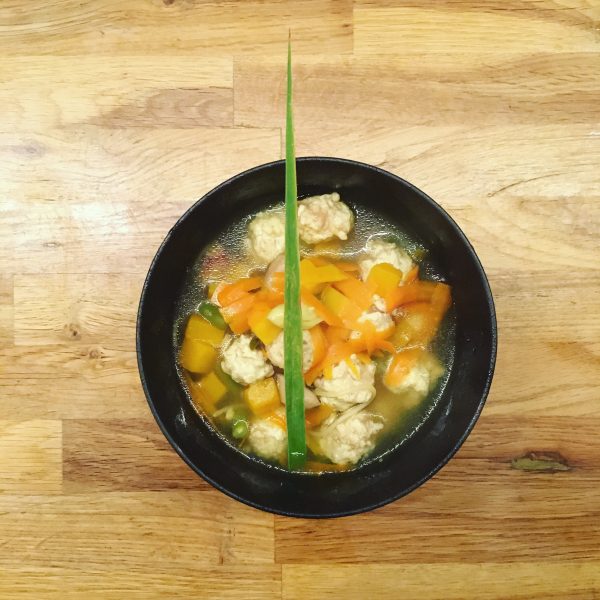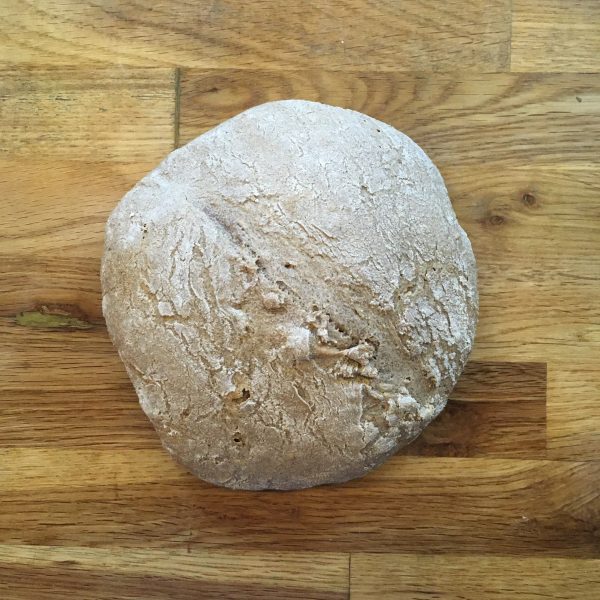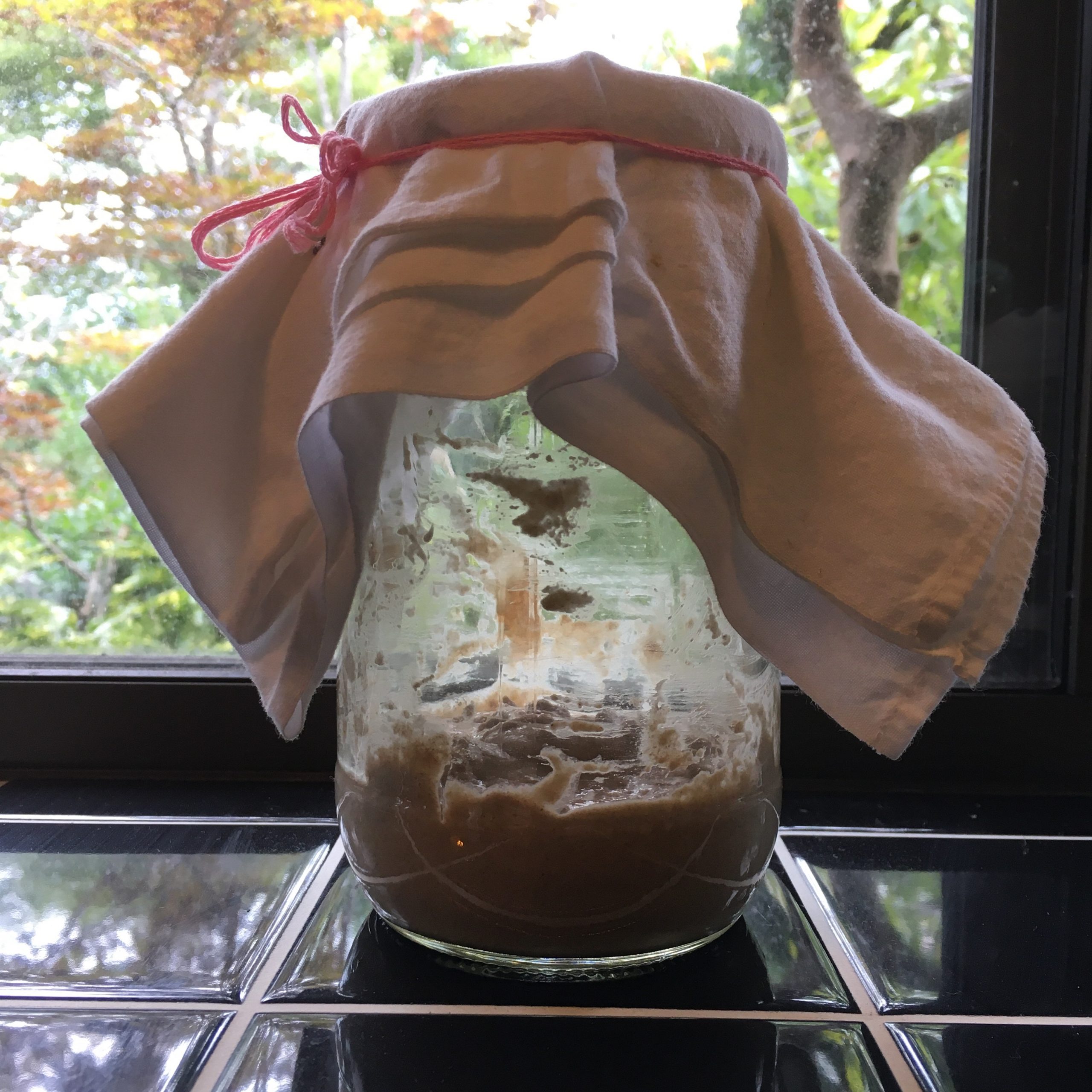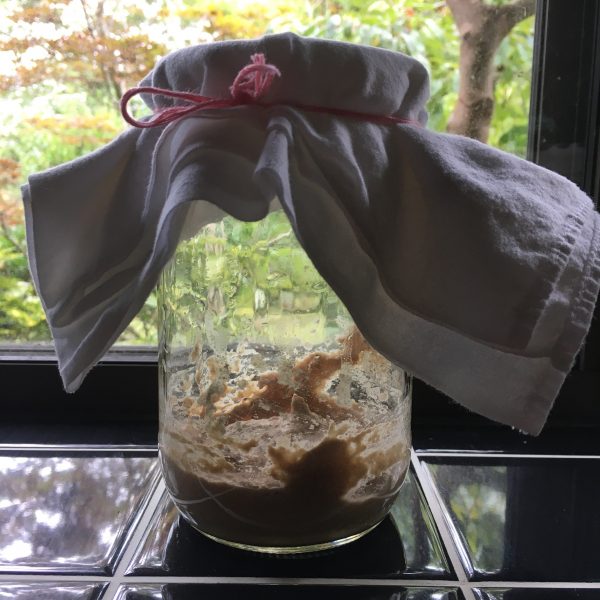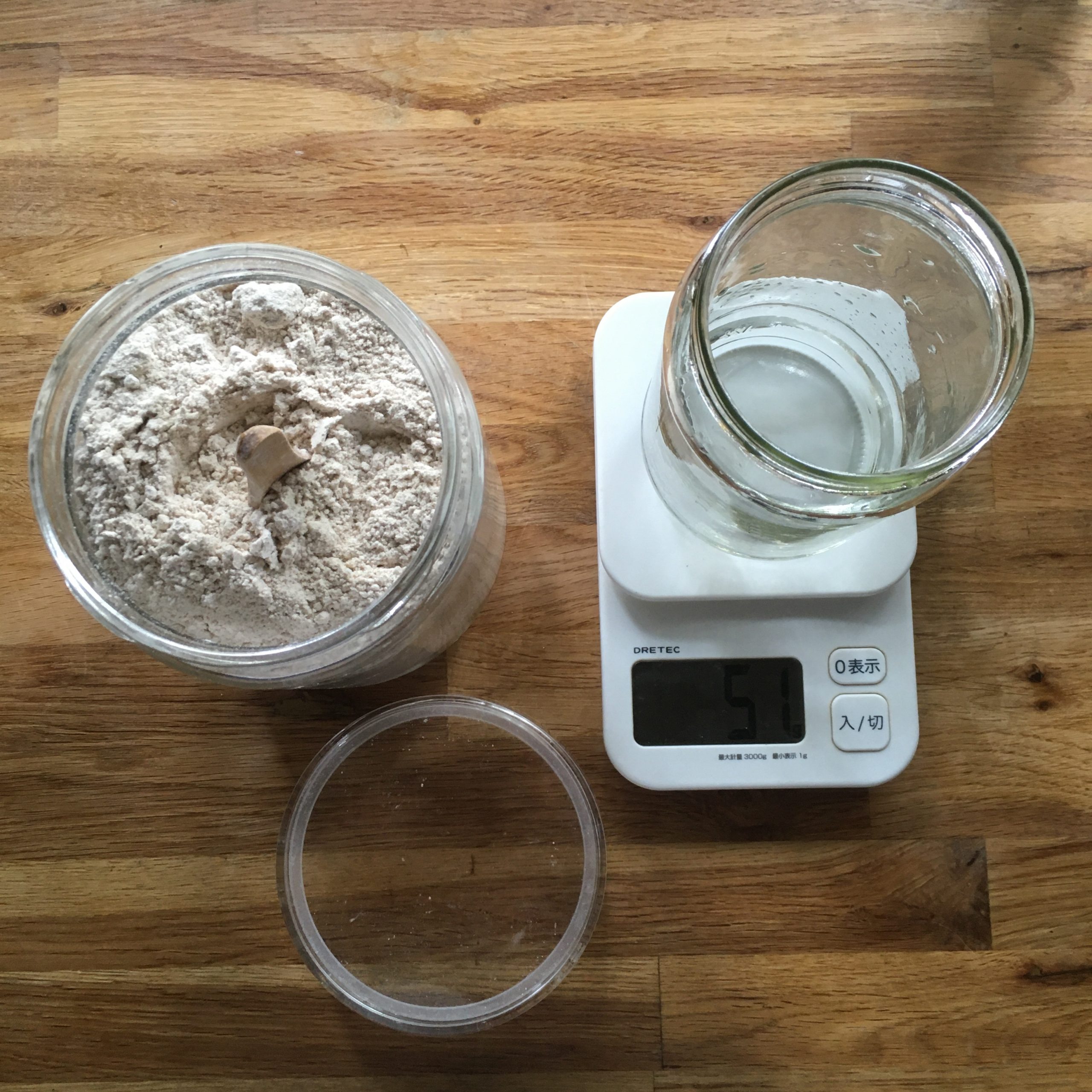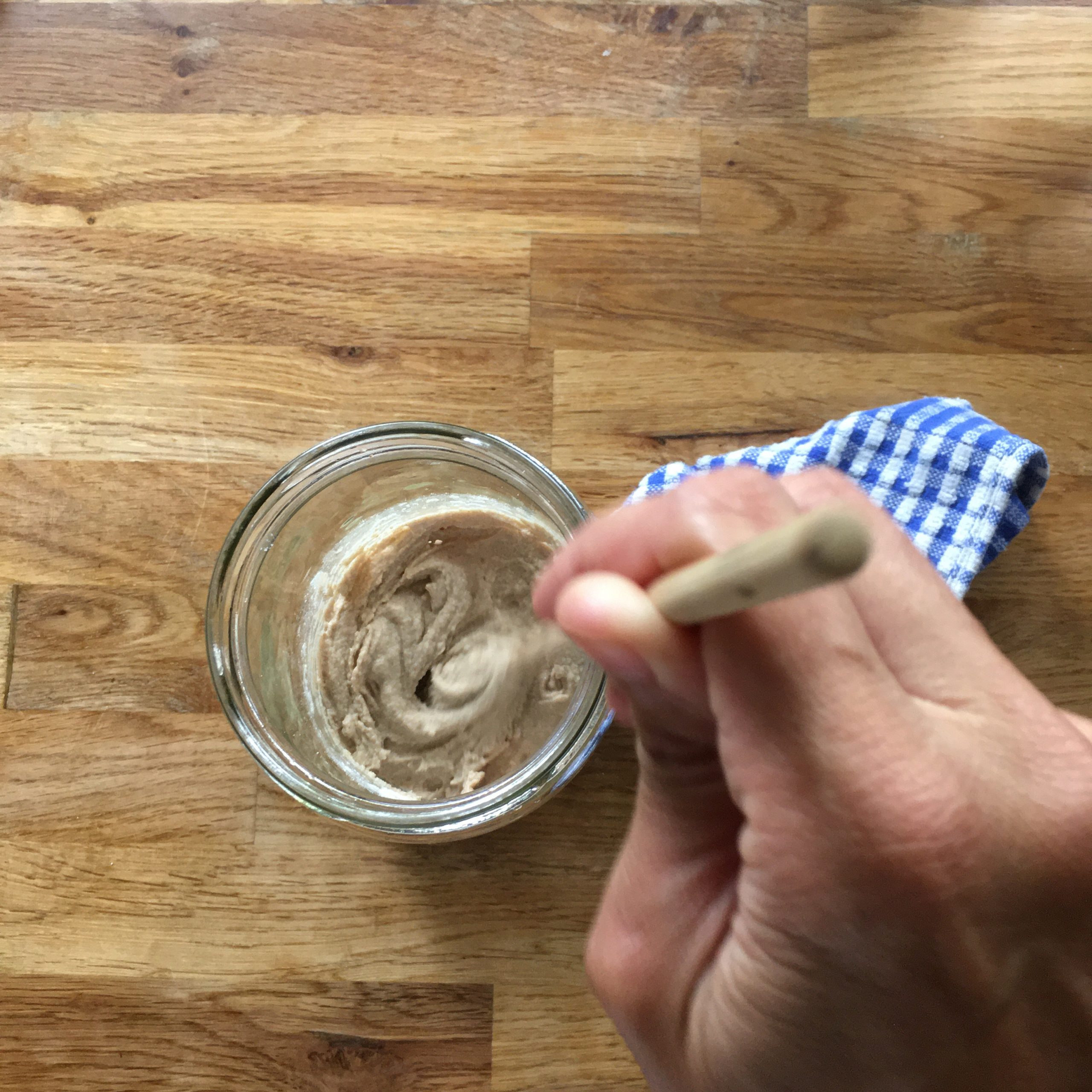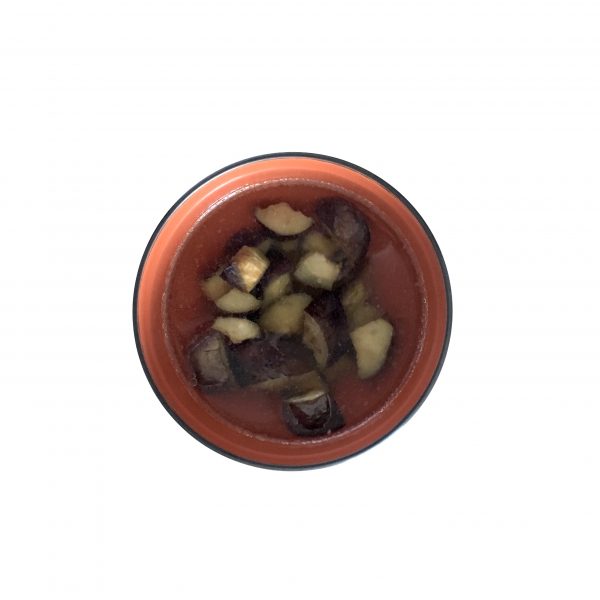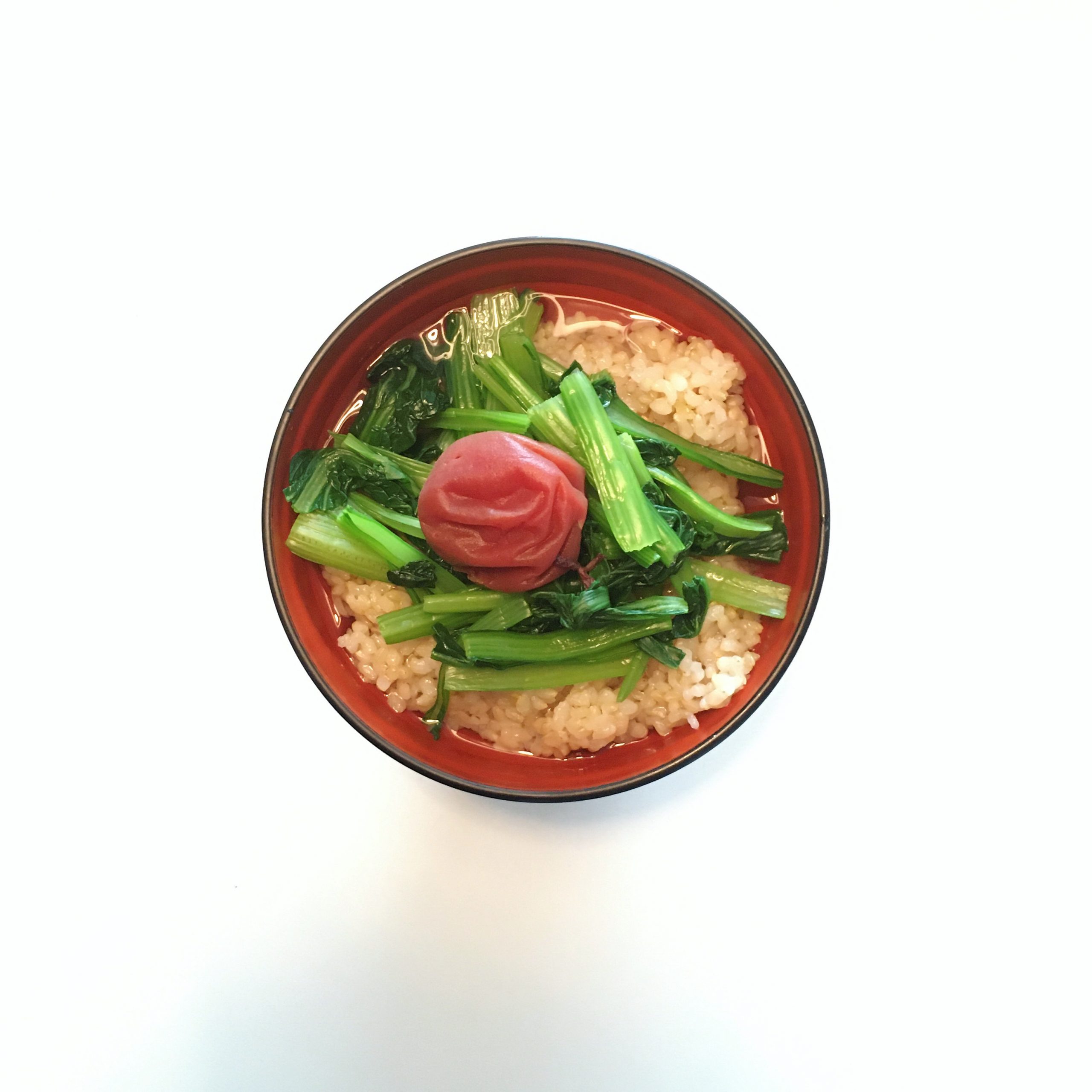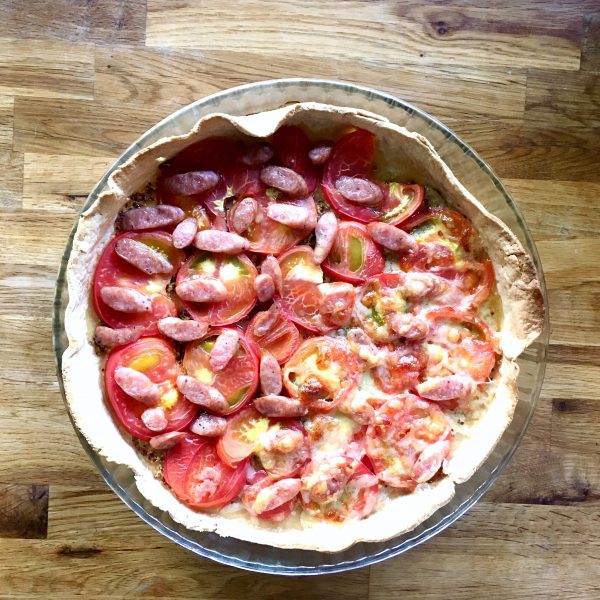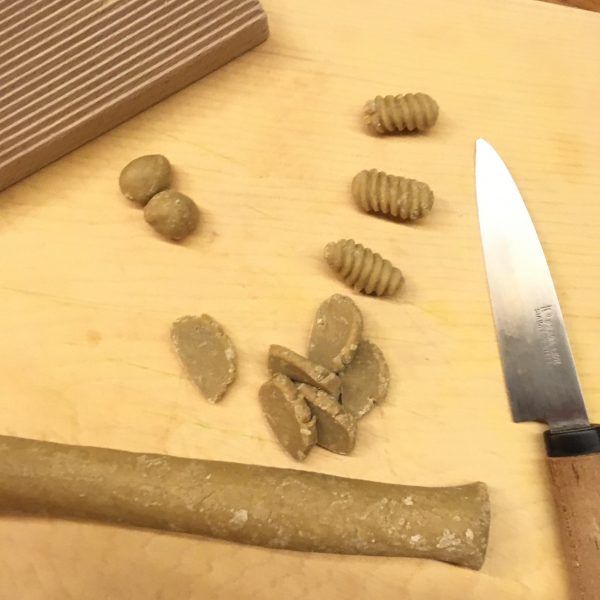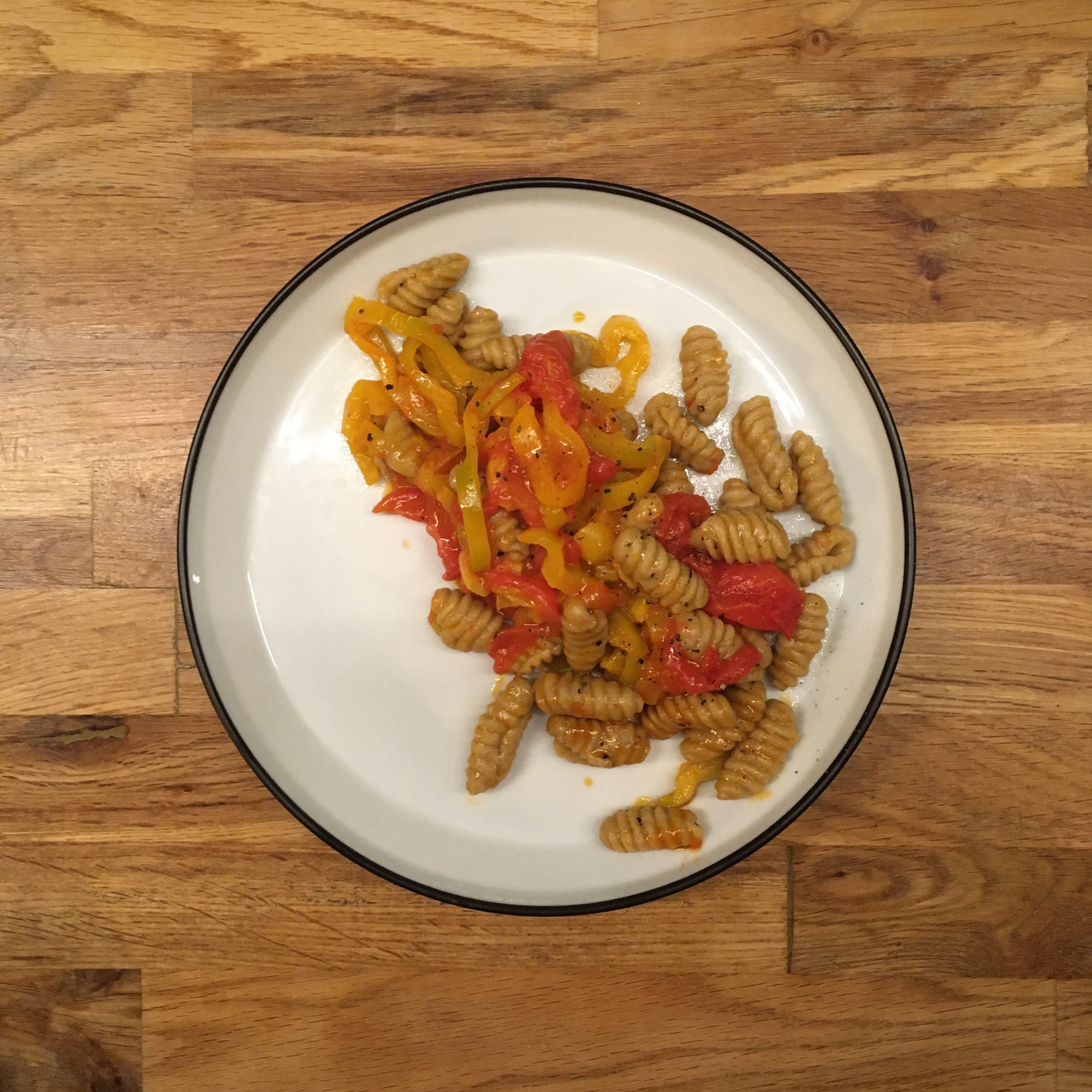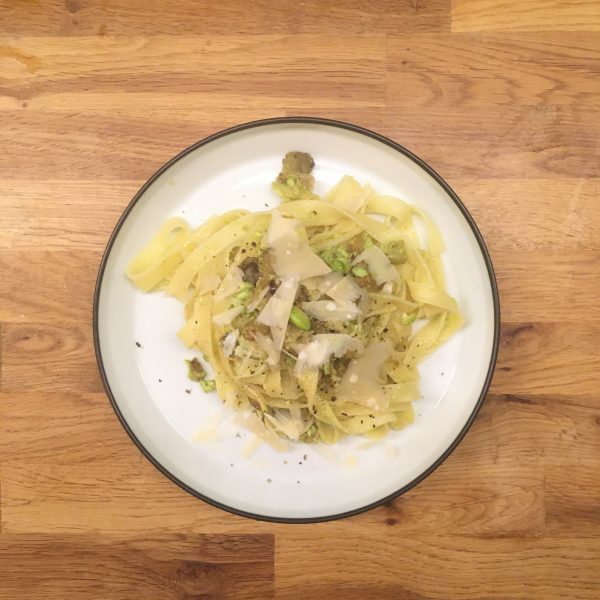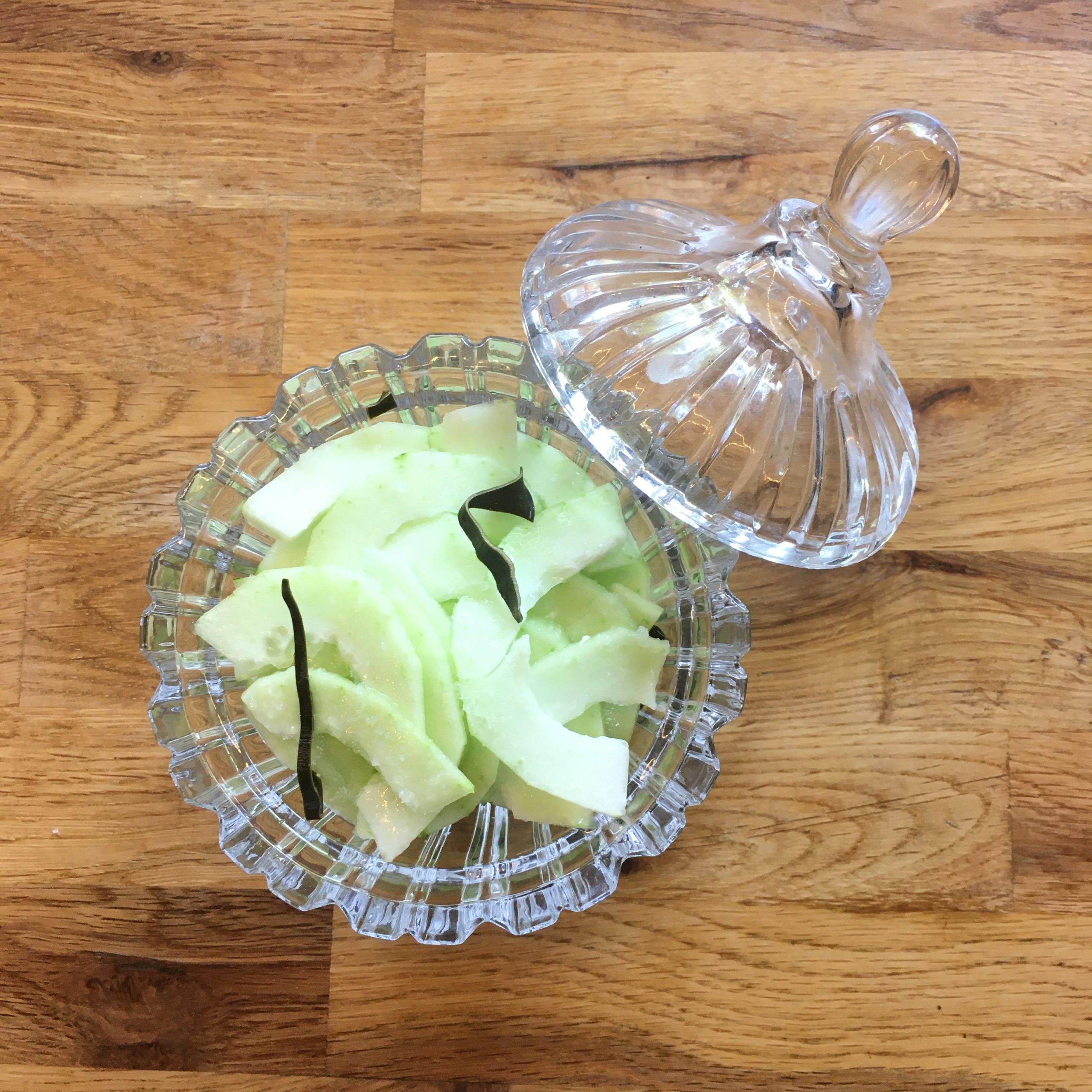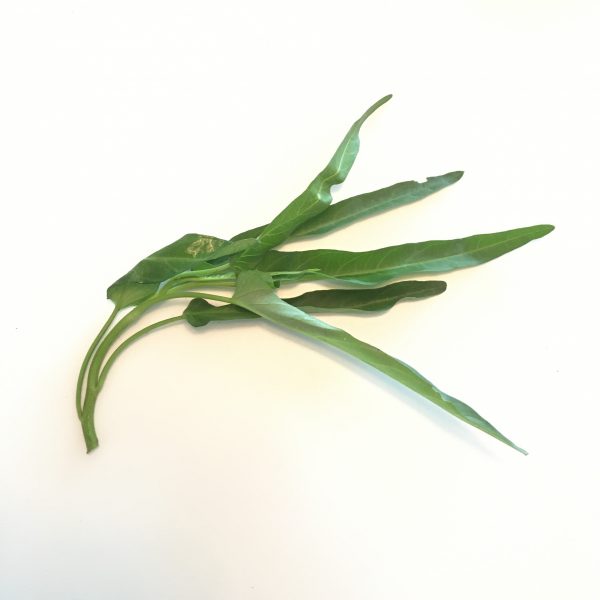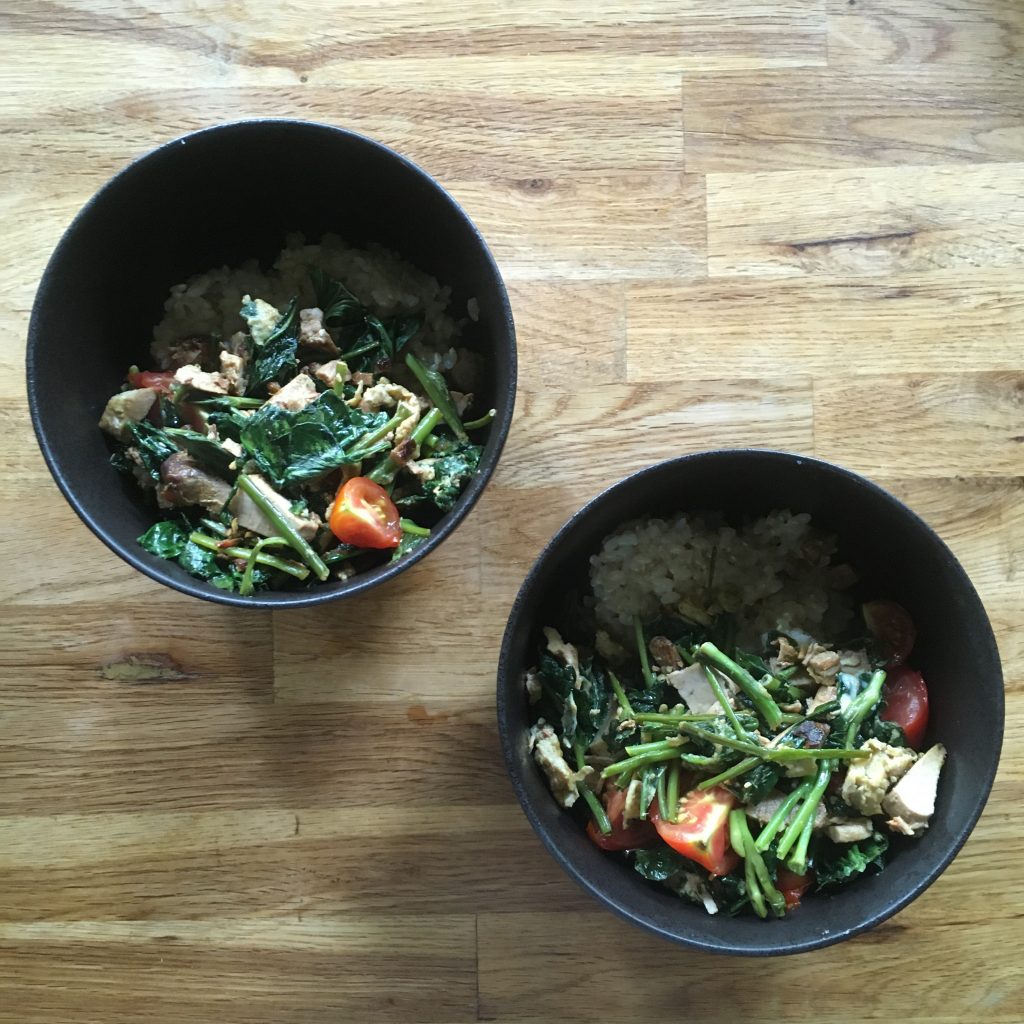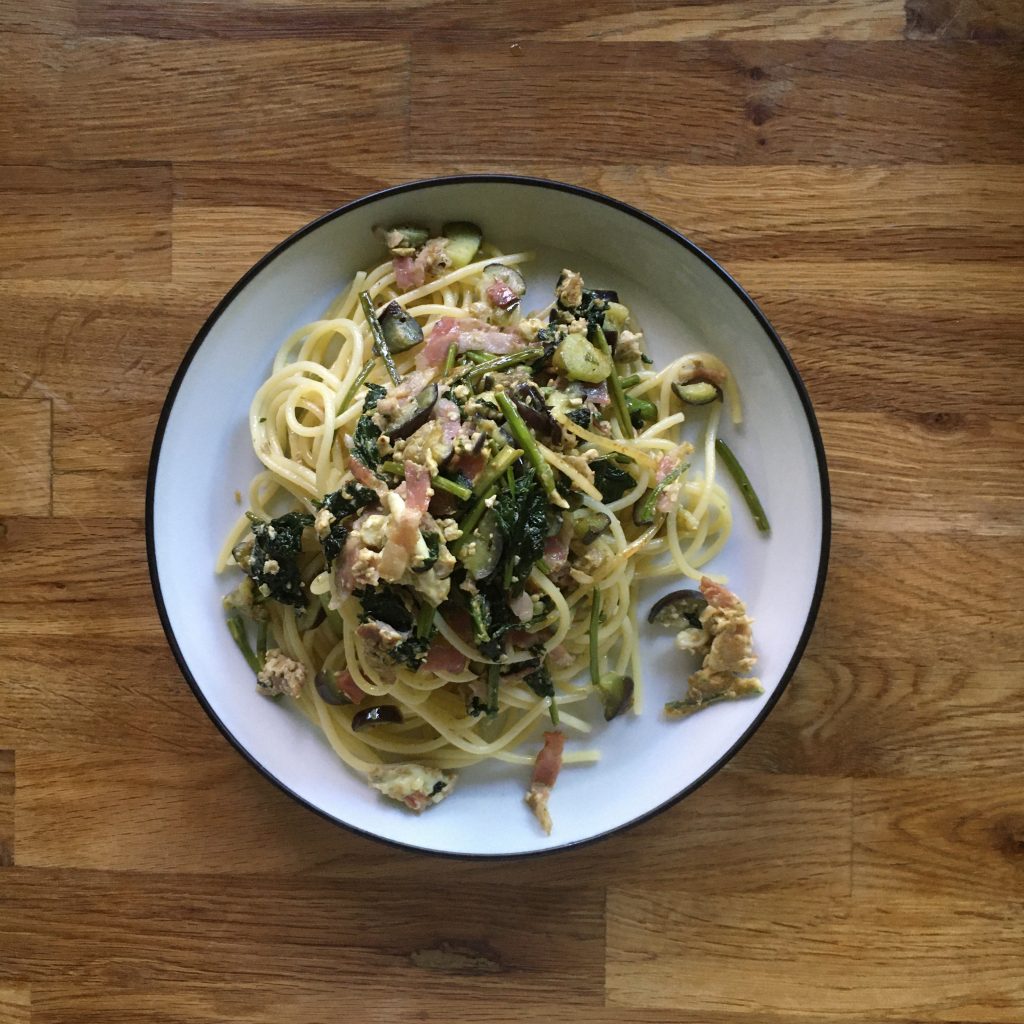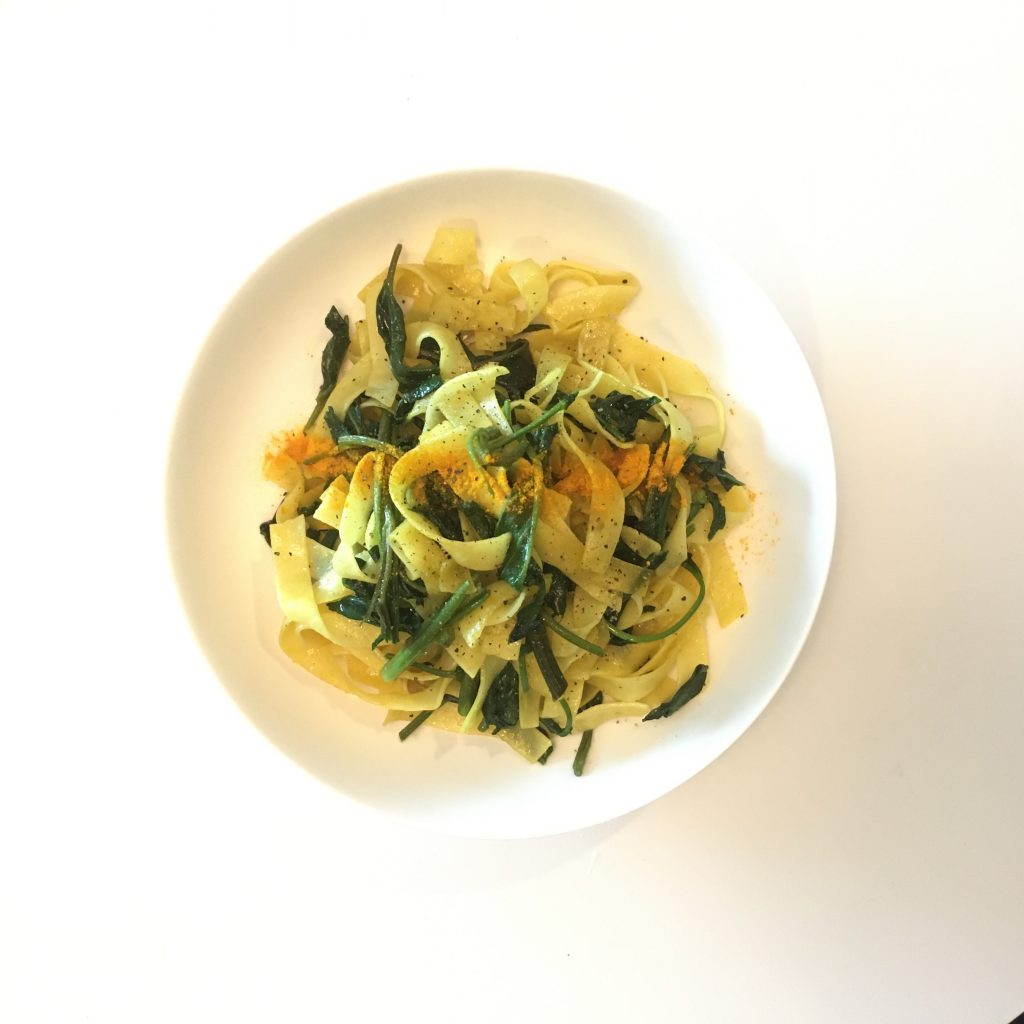As the summer fades away, autumn days are slowly settling in. Autumn in Japan does not mean yet fallen leaves, cold mornings etc… we’ll have to wait at least another month for that! October is usually a fair month with warm days and just chilly enough evening and mornings to enjoy a walk or a bicycle ride. The food stalls start changing in colors and products too. The new rice harvested in August, the pumpkins and kabocha, the lotus roots… of course some of the summer food will still be around for a while: the super ripe tomatoes, the last crunchy cucumbers…
Combined together late summer and early fool ingredients are perfect such as in this pasta recipe below: tomatoes, butternut, lotus root… simple but delicious.
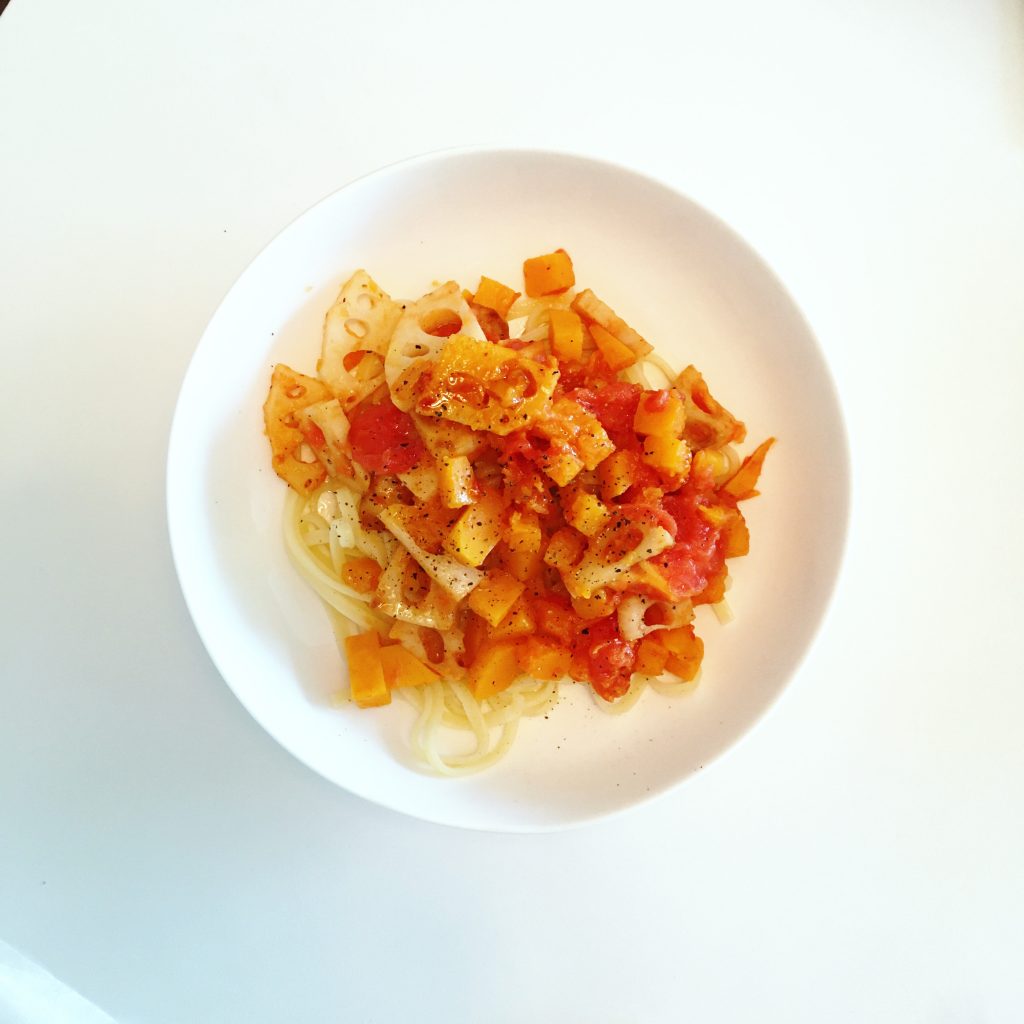
With the more chilly evenings, it is nice to curl under a little blanket and eat a warming dish, warming by its color and flavors. So I prepared a slightly spicy soup with fresh vegetables and chicken meat-balls, in a bouillon of spices and fresh lemongrass. Here is my recipe, it’s super simple!! Hope you’ll like it!
Spicy soup (2 servings)
- 1 carrot
- 1 2cm slice of butternut squash
- A handful of green beans
- 100-150g of chicken breast grounded
- 1 tsp of potato starch
- 1 pinch of turmeric
- 1 pinch of chilly pepper
- 1 pinch of coriander
- 1 pinch of salt and pepper
- 1 leave of fresh lemongrass
- 100g of vermicelli or thin noodles (optional)
Actually you can adjust the vegetables to what you have around… I sliced the carrot with the peeler to obtain very thin slices, but you can also do a julienne or small stick… it’s up to you…
So in in a large pan I heat 1L if water, add the vegetables and the spices. Then in a bowl I mix the meat and the starch. Make small balls (1.5-2cm diameter) and toss them in the boiling bouillon. After 10min all is ready. 5min before eating I add the noodles. They cook very quickly and you don’t want them to become thick and too soft. Serve immediately. Yes… that’s it!!!
Have a good day!
